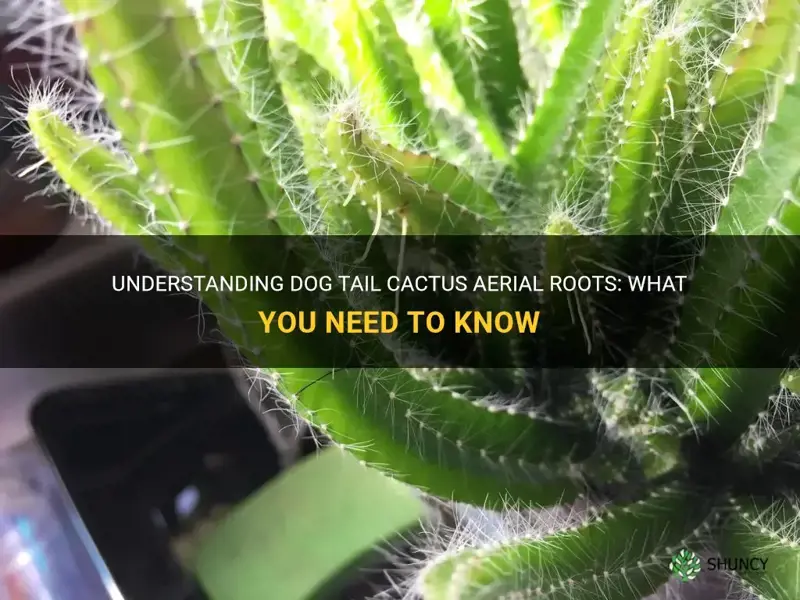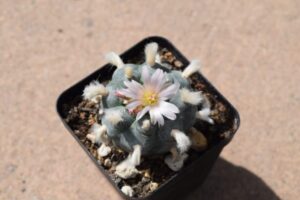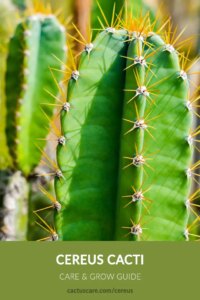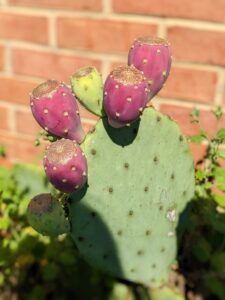Dog Tail Cactus, scientifically known as Rabiea sladeniana, is a unique succulent that captivates plant enthusiasts with its extraordinary aerial roots and aesthetically pleasing appearance. This cactus, native to an arid environment, has evolved into a remarkable specimen that not only thrives in its natural habitat but also adapts beautifully to domestic settings. Understanding how to care for the aerial roots of the Dog Tail Cactus is essential for its health and growth, as well as for the enjoyment of its striking visual elements.
The aerial roots that protrude from the stems of the Dog Tail Cactus serve not only a functional purpose but also contribute significantly to its charm. These roots add a touch of whimsy, creating an intriguing visual spectacle that can elevate any indoor or outdoor garden. The phenomenon of aerial roots allows the cactus to absorb moisture and nutrients from the air, making this succulent particularly fascinating to cultivate.
For anyone considering the addition of a Dog Tail Cactus to their collection, understanding the nuances of its aerial roots is crucial. This article will provide an in-depth exploration of how to care for and maintain this unique cactus, ensuring it remains a vibrant part of your green sanctuary.
Understanding the Aerial Roots’ Functionality
The Dog Tail Cactus is distinguished by its elongated, snake-like stems, which are often adorned with succulent leaves. The most notable features are its aerial roots. These roots extend from the stems in search of humidity and moisture, effectively serving as an adaptation to its native arid environment. Oceans of air envelop the cactus, allowing these roots to absorb precious water droplets and nutrients present in the atmosphere.
This unique adaptation enhances the cactus’s ability to survive periods of drought, solidifying its resilience. Gardeners are often intrigued by this characteristic, prompting a closer examination of the application of these roots in cultivation. While the primary function of aerial roots is to anchor the plant and gather moisture, they also contribute to the overall aesthetic appeal of the cactus, with their sinuous form flowing gracefully downward.
Creating the Perfect Environment for Growth
To cultivate a healthy Dog Tail Cactus, it is essential to recreate an environment that mirrors its natural habitat. This includes optimal light conditions, temperature, and humidity levels. The Dog Tail thrives in bright, indirect sunlight, making it suitable for placement near a window that receives ample light without direct exposure. Avoiding harsh sunlight will prevent sunburn on the delicate stems and aerial roots.
Temperature control also plays a vital role in the health of the cactus. Dog Tail Cacti prefer temperatures ranging from 70°F to 100°F (21°C to 38°C) during the day and should not be subjected to temperatures below 45°F (7°C) at night. A consistent environment free of cold drafts will nurture growth and encourage the development of robust aerial roots.
Humidity is another critical factor for the Dog Tail Cactus. While this plant can tolerate dry air, maintaining moderate humidity levels, akin to its native habitat, will benefit its aerial roots. Consider misting the plant occasionally or using a pebble tray beneath the pot filled with water to ensure adequate moisture levels in the surrounding air.
Watering: A Delicate Balance
The hydration needs of the Dog Tail Cactus must be approached with caution; overwatering can lead to root rot, while under-watering can inhibit growth. The best practice is to allow the soil to dry out completely between waterings. When watering, use a balanced succulent mix that drains well to provide the necessary moisture without saturating the roots.
For those cultivating aerial roots, maintaining slightly higher humidity levels is crucial. Consider utilizing a water-soluble fertilizer during the growing season to encourage growth. However, it is essential to dilute the fertilizer to avoid overloading the cactus with nutrients.
Understanding Pests and Diseases
Even resilient plants like the Dog Tail Cactus are susceptible to pests, requiring vigilance from caretakers. Common pests include mealybugs, spider mites, and scale, which can attach themselves to the aerial roots and stems. Regularly inspecting your cactus for signs of infestations is essential; if detected, treating the plant promptly with insecticidal soap or neem oil is advisable.
Aside from pests, fungal infections can arise if the cactus is overwatered. Yellowing roots or decaying stems are indications of potential root rot. Taking preventative measures, such as ensuring proper drainage, will help to avoid these issues and maintain the integrity of both the control roots and the plant as a whole.
Embracing the Aesthetic Appeal
The Dog Tail Cactus is more than just a resilient succulent; it is an artistic addition to any collection. With its striking aerial roots, it embodies the beauty of nature’s adaptability. When placed in a decorative pot, the silhouette of the cactus, complemented by its trailing roots, creates an enticing focal point within any living space.
Utilizing contrasting soil colors or textured pots can further accentuate the unique characteristics of the Dog Tail Cactus. Indoor gardening enthusiasts can display them in creative hanging arrangements, permitting the roots to cascade elegantly. Similarly, outdoor gardens can benefit from their oddly captivating form, promoting an enchanting visual narrative influenced by natural growth patterns.
In conclusion, the Dog Tail Cactus is a fascinating specimen worthy of care and admiration. Understanding the nuances of its aerial roots, creating a conducive environment, and maintaining vigilant care can result in a thriving cactus that brightens any space. Its unique characteristics not only contribute to its resilience in adverse conditions but also lend themselves seamlessly to imaginative displays, making it a prized object of affection for both novice and seasoned gardeners alike.





Leave a Comment